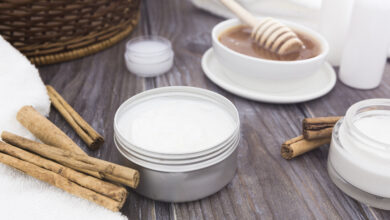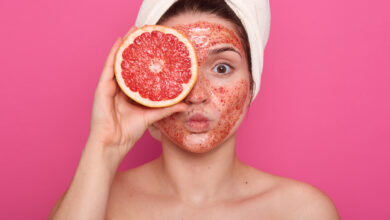Hi there! You probably drink green tea several times a week, like most people. Did you know that drinking this antioxidant-rich drink can help your skin? Green tea can improve your skin as well as your health. This article explains the science behind green tea’s skin benefits and offers five methods to include it into your daily routine for beautiful, healthy skin. The chemicals in green tea can cure acne, reduce aging, and more. Learn how to use this fantastic drink to enhance your natural attractiveness!
Green Tea Contains Powerful Antioxidants That Protect Skin
Green tea is rich in antioxidants that protect skin and offer considerable advantages. Antioxidants neutralize free radicals, which harm skin cells and age it.###Green tea’s main antioxidant, EGCG (epigallocatechin gallate), rejuvenates skin cells and protects against UV damage. Two cups of green tea a day reduces skin cancer risk by 60%, according to research. EGCG protects cells from DNA damage that causes tumors. It prevents malignant tissues from growing new blood vessels. ###Antioxidants in green tea reduce skin irritation. The main cause of acne, rosacea, and psoriasis is inflammation. Anti-inflammatory catechins in green tea helps clear and minimize redness.
Daily green tea consumption improves skin health and attractiveness. After drinking green tea, many people report a radiant, even complexion, smoother skin, and less breakouts.
Skin application of green tea enhances its effects. Green tea antioxidant creams and lotions have been shown to:
Reduce wrinkles, fine lines, and sunspots. •Boost skin firmness and elasticity. Calm redness and inflammation. Skin moisturization without pore clogging.
Drink 2-3 cups of green tea each day and utilize skin care products with EGCG or extract to enhance skin benefits. The antioxidants in this anti-aging elixir will give you younger, healthier skin over time.
The Caffeine in Green Tea Can Decrease Inflammation
Caffeine in green tea reduces skin inflammation.### Redness and swelling decrease with caffeine. As a moderate diuretic, caffeine can lower skin tissue fluid. It reduces edema and puffiness. The caffeine in one cup of green tea may help red, irritated skin.
It inhibits inflammation at a cellular level.
Caffeine reduces skin irritation molecularly. Enzymes and proteins that cause inflammation are inhibited. This involves blocking pro-inflammatory chemicals like IL-6 and TNF-alpha.
It’s soothing for sensitive skin.
Green tea’s anti-inflammatory properties may help relieve redness and irritation from skin diseases like rosacea, eczema, and psoriasis. Caffeine calms skin and reduces flare-ups, while catechins build the skin barrier as antioxidants. Green tea-infused skin care or facial steaming may calm and desensitize reactive skin.
It reduces puffiness around the eyes.
Skin surrounding your eyes is thin and sensitive, leaving it prone to swelling. Green tea caffeine constricts eye blood vessels, reducing puffiness and bags. An eye lotion with green tea extract can tighten, brighten, and de-puff tired, aging eyes.
Drinking a few cups of green tea everyday or utilizing skin care products with green tea extract will soothe, reduce redness, and give you a healthy glow. You should use green tea for skin care, especially if you have sensitive or easily inflamed skin.
Green Tea May Help With Acne and Blemishes
Healthy skin advantages from green tea include reducing inflammation and fighting acne. Green tea catechins, notably EGCG, have antibacterial effects that treat acne-causing microorganisms.###
Green tea administered topically helps mild to moderate acne, according to research. Tea reduces inflammation, redness, and lesions. Applying green tea extracts or toners directly to trouble areas works best. Put cooled green tea bags on acne-prone areas for 10-15 minutes a few times a week as a compress.
Oily skin and blocked pores may benefit from green tea. As an astringent, green tea catechins decrease skin tissue. This can constrict pores and reduce oil production when applied to the skin. Toners and lotions with green tea extract can manage oil and clean pores.
Drinking a couple cups of green tea daily may help persistent pimples and cystic acne. Green tea’s EGCG balances hormones and lowers testosterone, reducing acne. The antioxidants in green tea boost the immune system and skin health.
To conclude, green tea and its extracts may benefit:
•Reducing acne inflammation and redness.
• Fighting breakout-causing germs.
•Controlling oil and tightening pores.
Balance hormones and reduce hormonal acne. • Improving skin health and immunity for clear, bright skin.
Green tea may not clear acne for everyone, but adding it to your daily skincare routine can improve your complexion. Regular green tea use can improve skin texture, brightness, and blemishes.
Drinking Green Tea May Reduce Signs of Aging
Our skin naturally develops wrinkles, age spots, and sagging as we age. Green tea may decrease these aging processes and keep your skin young. ###Antioxidants in green tea protect skin. Green tea contains EGCG, a strong antioxidant that protects skin cells from environmental stress that causes aging.
Skin firmness and elasticity improve with green tea. EGCG in green tea may inhibit collagen and skin tissue degradation enzymes. Preserving collagen helps skin retain its firmness and suppleness. Collagen formation may increase with green tea.
Green tea prevents sunburn. Antioxidants in green tea protect skin cells from UV damage. Sun exposure is a major cause of skin aging, hence green tea may help prevent photoaging. While it won’t replace sunscreen, green tea may help prevent age spots, wrinkles, and sagging skin.
Green tea lowers skin irritation. Dermatitis, acne, and rosacea can damage skin and hasten aging due to inflammation. Green tea’s anti-inflammatory properties may minimize skin inflammation and flare-ups.
Green tea has anti-aging properties for skin, so drink 2–3 cups daily. Drink it hot or cold, add honey for sweetness, or mix green tea powder into yogurt or porridge. Drinking green tea daily may help you get younger-looking skin from within.





